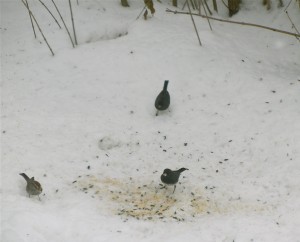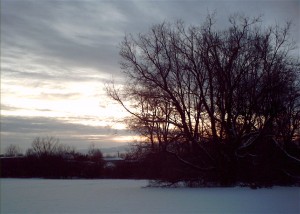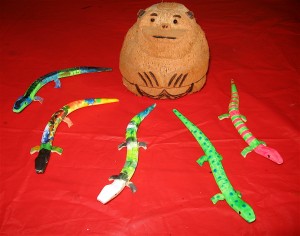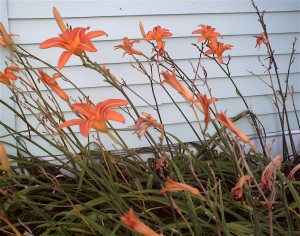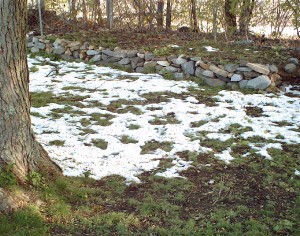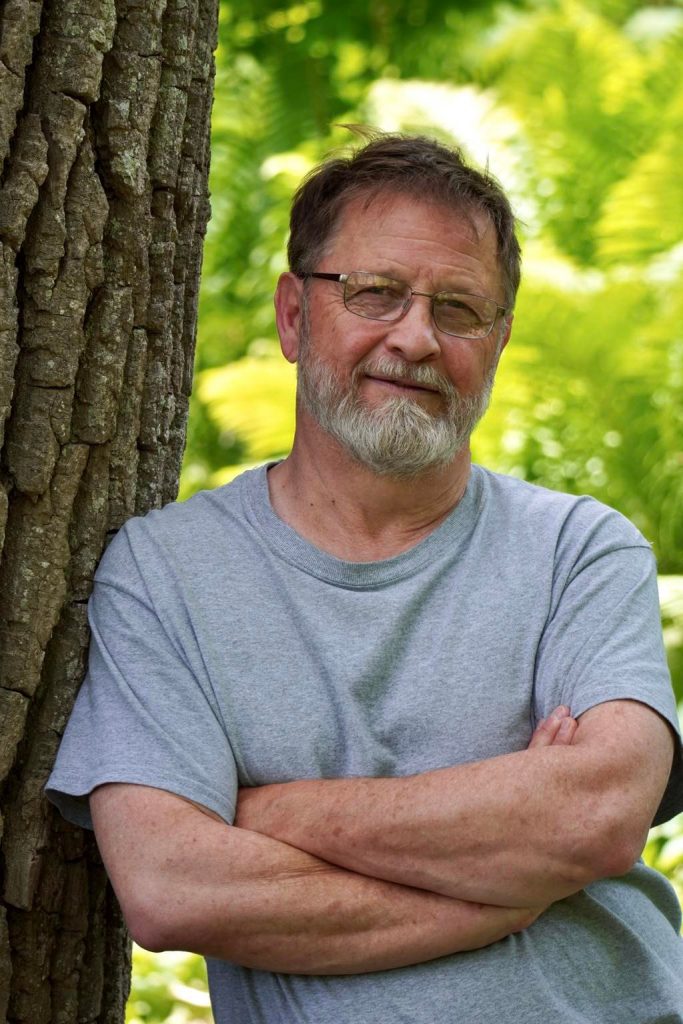May 12 2011
A New Day
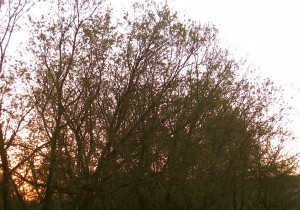 Just before dawn, I open the back door for my dog then follow her out. I laugh as she chases a pair of rabbits to the fence. The grass is cool to my bare feet but not cold. The robins sing joyfully their early morning song, as if the sun rising was a long awaited event. Matika grins from ear to ear. Perhaps she is as excited as I am by the unfurling of leaves in the trees, and the long promise of the warm season that comes with it.
Just before dawn, I open the back door for my dog then follow her out. I laugh as she chases a pair of rabbits to the fence. The grass is cool to my bare feet but not cold. The robins sing joyfully their early morning song, as if the sun rising was a long awaited event. Matika grins from ear to ear. Perhaps she is as excited as I am by the unfurling of leaves in the trees, and the long promise of the warm season that comes with it.
In an hour I’ll mobilize for work, but right now I’m grooving on the quiet wonder of wild nature right here in my back yard. This would be a good day to hike in the mountains, I tell myself. That’s out of the question, of course. Duty calls. All you 9-to-5 working stiffs out there know the feeling well, I’m sure. But it’s new to me. I just started working full time, you see. For eighteen years I had only a part-time job.
I’ve had a good run. I worked, then hiked, then wrote, then hiked some more, then wrote some more. It was good while it lasted. But all good things must end, right? They do unless you strike it rich, and that hasn’t been my fate. My dream of being able to support myself by writing alone turned out to be just that – a dream. Perhaps if I had been a journalist, or a novelist working in some popular genre, or hip enough to catch the eye of the established literati I could have made a go at it. But writing about the wild doesn’t get you there – not the way I do it, anyhow. So here I am looking at a new day. That’s okay. I’ve been true to myself. And thanks to my infinitely patient wife, Judy, I’ve had a very good run.
The fresh verdure thickening in the trees is more beautiful than I remember it. That’s the way things always are at a new beginning. We forget the charm of springtime during the winter months. We forget the magnificence of daybreak no matter how many times we’ve seen it before. Every day is some kind of miracle. Okay, maybe that’s not true, but things certainly seem that way whenever I’m standing barefoot in my back yard at daybreak and listening to songbirds. I could curse the gods, longing for that which I do not have, but I’m not going there today. No, not today.

